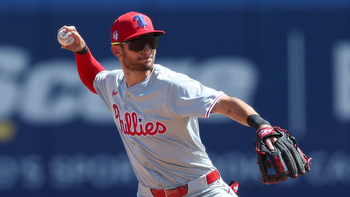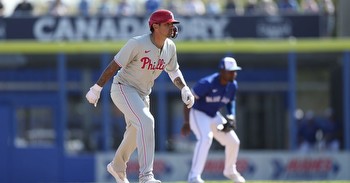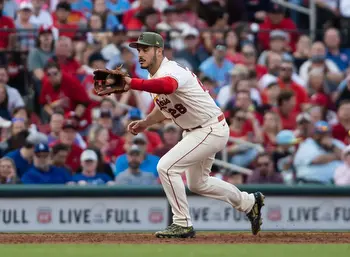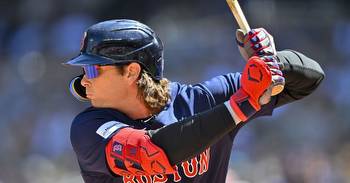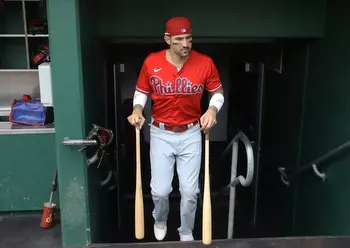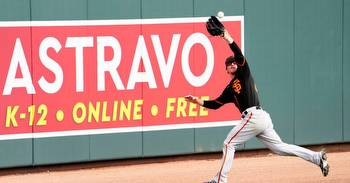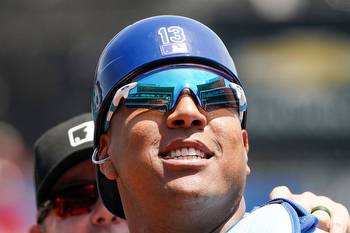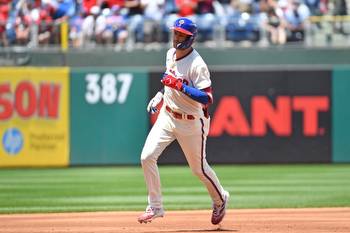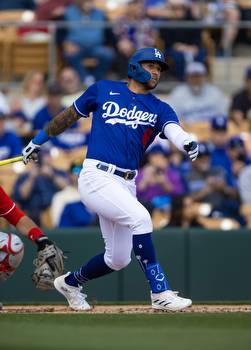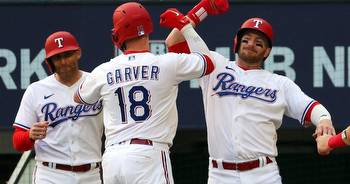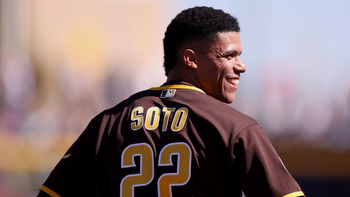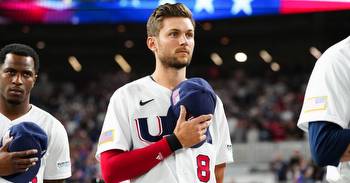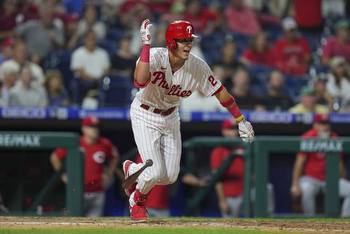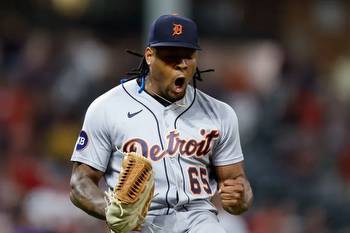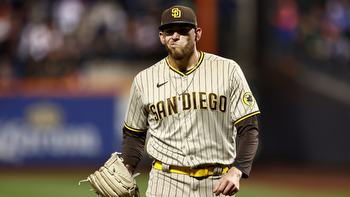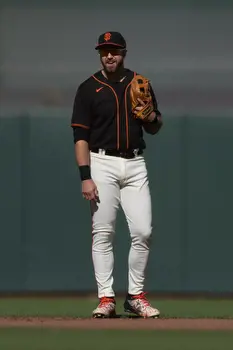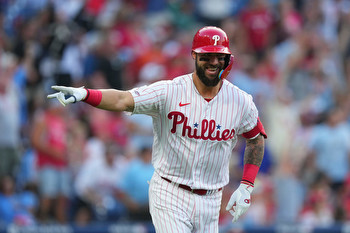Phillies spring training: Johan Rojas among the three most intriguing players on the roster
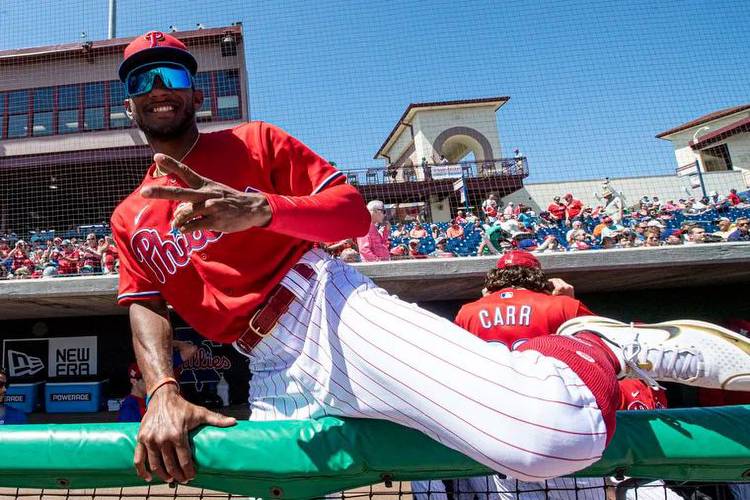
All good teams are built on a foundation of blue-chip talent. The great ones usually benefit from some pleasant surprises. We saw that with the Astros (Framber Valdez, Cristian Javier, etc.). We’ve seen it with the Dodgers (Justin Turner, Max Muncy, etc). We saw it with the last Phillies team that won a World Series (Jayson Werth, Shane Victorino, etc.).
Dave Dombrowski and Sam Fuld know this as well as anybody. You can see it in the aggressive way they’ve prioritized upside when fashioning this spring training roster. There may not be much intrigue as far as roster battles go this spring. But with the first full-squad workout set for Tuesday, here are three players who will be worth a close eye.
Johan Rojas, center field
The 22-year-old center fielder might be the biggest reason to watch the Grapefruit League. His speed is one of those things you can see with your own two eyes. Widely considered to be the Phillies’ top major-league-ready prospect, Rojas is coming off a year in which he stole a remarkable 75 bases in 80 attempts. That includes a 13-for-13 performance in the Arizona Fall League, where he quickly established himself as the fastest player on the circuit.
Rojas’ speed and defense make him a legitimate candidate for a call-up if the Phillies lose Brandon Marsh for an extended period of time this season. Question is, can he hit?
There weren’t a lot of positive signs on that front as recently as last June. After hitting an unimpressive .240/.306/.374 at low-A Clearwater in 2021, Rojas had a brutal start to his 2022 season. In his first 22 games at high-A Jersey Shore, he hit .201/.263/.276 with a mere nine extra-base hits and 15 walks in 192 plate appearances. In scouting terminology, that’s referred to as “not good.” Speed only matters if you give yourself a chance to use it.
But then something clicked. In June, Rojas posted a .751 OPS with eight extra-base hits in 100 plate appearances and earned a promotion to Reading. After taking a month to find his footing, he finished the double-A season on a monthlong tear, hitting .302/.388/.443 with 21 strikeouts and 13 walks in 121 plate appearances over his last 28 games. He maintained that improvement in a 12-game stint in the Arizona Fall League, hitting .310/.423/.452 in 52 plate appearances.
The numbers are even more encouraging under the hood, where Rojas made significant improvements in both his power and approach, with meaningful bumps in both his walk rate and extra-base-hit rate without any corresponding increase in his strikeout rate.
Rojas’ first 102 games: 435 PAs, 78 K, 29 BB, 25 XBH, 5 HR, 47/49 SB
Rojas’ last 28 games: 121 PAs, 21 K, 13 BB, 9 XBH, 2 HR, 15/18 SB
Rojas’ 12 games in Arizona Fall League: 52 PA, 8 SO, 8 BB, 5 XBH, 0 HR, 13/13 SB.
Do the math and you’ll see he improved his walk rate by roughly 25% (5.8 to 7.4) and his extra-base-hit rate by roughly 50% (6.7 to 10.7). That’s encouraging, especially when you pair it with his base-stealing ability.
Even if Rojas never sees the majors this year, he could easily become an interesting plot line. He plays the same position as 2022 first-round draft pick Justin Crawford, which happens to be the same position where the Phillies hope to have found a long-term solution in Marsh. That’s hardly the same logjam they faced before trading away catcher Logan O’Hoppe in the Marsh deal. But Rojas could play his way into some trade-deadline value should a pitcher shake loose onto the trade market (looking at you, Shane Bieber).
Gregory Soto, reliever
Before we get too deep into the weeds, I should make it clear that none of what you are about to read should be interpreted as a criticism of the Phillies’ trade for Soto late this offseason. Nick Maton wasn’t going to make a meaningful impact on the Phillies’ title odds this season. Soto has a chance to do that. It’s as simple as that. Fact is, the Phillies landed an experienced strikeout arm who throws in the upper 90s and is still in his physical prime for a 26-year-old utility man who was heading into his last option season and was thus likely to be playing elsewhere next year.
On the other hand ... well, reread that last sentence. Price points are what they are for a reason, and the Phillies only had to pay what they did for a 28-year-old two-time All-Star who has a 3.34 ERA over the last two seasons, a modest salary, and three years remaining before free agency. They were able to do that for two reasons: 1) The Tigers were willing to accept that price for Soto; 2) No other team was willing to pay more.
Now, why might that be?
Soto’s an interesting guy. His ascension to All-Star status in Detroit coincided with a marked rise in his fastball velocity. As a 24-year-old rookie in 2019, he averaged 95.4 mph on his heater while posting a 5.77 ERA. Over the next couple of years, his average velocity jumped to 97.3 and then 98.3. His strikeout rate jumped with it: from 7.0 K/9 in 2019 to 10.9 K/9 in 2020-21.
Those strikeouts are key. Soto has been maddeningly erratic throughout his career, with a walk rate that has consistently sat at 5-plus per nine innings. He is one of seven pitchers in the majors to have at least 14 wild pitches in fewer than 125 innings over the last two seasons. But his ability to miss bats has made up for the control issues.
Last season, that strikeout rate dipped significantly enough that you can’t help but wonder if it factored into the Tigers’ decision to trade him this offseason. In 2020-21, Soto struck out 28.1% of the batters he faced. Last year, he struck out 22.8%. The results were still there, ERA-wise. So was the velocity. But for a guy whose success is almost entirely dependent on his ability to miss bats, the fact that he missed fewer of them is at least worth flagging.
Also notable is how Soto ended last season. In his last 11 appearances, the lefty struck out just six of the 42 batters he faced. He also walked six. During that stretch, 16 of the 30 balls in play he allowed were qualified as “hard hit,” according to Statcast’s metrics. That’s 53.3%. Up to that point, he had posted a hard-hit percentage of 40.9. Likewise, his swing-and-miss rate declined from 25.6% to 15.6%.
I’m not suggesting that the Tigers were aware of some deeper issue (i.e., health). But, fact is, they know him better than anybody and they traded him when they did for what they did. At that price, Soto was a no-brainer for the Phillies. He has the potential to dramatically improve their bullpen. That said, the Phillies won’t know exactly what they have until they see him in camp. Which, it should be noted, the Dominican has yet to do because of visa issues.
Andrew Baker, reliever
Some guys have numbers that simply demand your attention. Sometimes, they do it in a funny way. Consider Baker, a 22-year-old right-hander with big stuff whom the Phillies have invited to big league camp two years after drafting him in the 11th round out of junior college. Word is, his fastball and curveball are big league strikeout pitches. But his command is a work in progress. And that’s putting it nicely.
Two years ago, Baker walked 11 of the 23 batters he faced in a three-game stint in the Cape Cod League. In September 2021, his first stint in affiliated ball ended after he walked 10 of 17 batters in a couple of appearances at Clearwater. Baker then began 2022 by walking eight batters in his first seven innings at Jersey Shore.
He’s in camp because of what happened from there. Beginning on May 8, Baker issued just 17 walks in a 43-inning stretch that saw him finish the year at double-A Reading. During that run, he struck out 63 batters and allowed just three home runs. That’s a heck of a turnaround.
Ten years ago, we saw how quickly Ken Giles figured out the strike zone and became a top-tier big league reliever. At the very least, Baker is a guy who will be interesting to watch.

